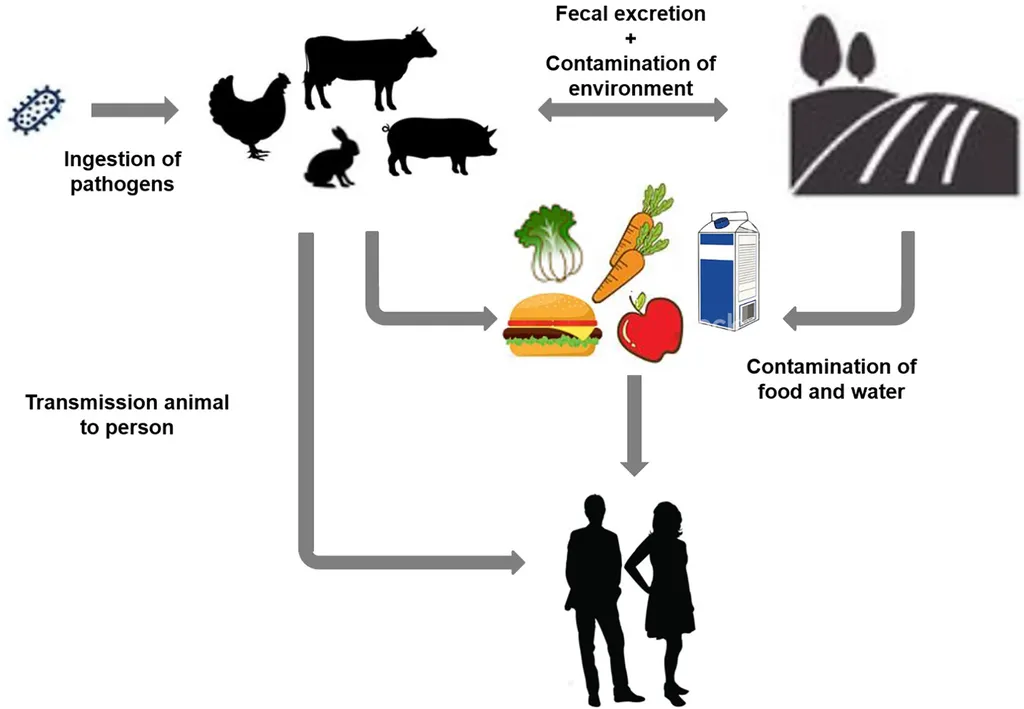In the ongoing battle against antibiotic resistance, a glimmer of hope has emerged from an unexpected quarter. Researchers have discovered that a compound called Notoginsenoside Ft1 can significantly enhance the effectiveness of the antibiotic gentamicin against Escherichia coli (E. coli), a common pathogen that causes a variety of infections in both humans and animals. This finding, published in the journal BMC Microbiology, could have profound implications for the agriculture sector, where antibiotic resistance is a growing concern.
E. coli is a versatile bacterium that can cause severe infections in livestock, leading to significant economic losses for farmers. Gentamicin, an antibiotic commonly used in clinical settings, has been a go-to treatment for these infections. However, the emergence of resistant strains has threatened its efficacy, prompting researchers to explore alternative strategies.
Enter Notoginsenoside Ft1, a compound derived from the Panax notoginseng plant, known for its medicinal properties. In this study, led by Yasong Yan from the College of Life Sciences at Jilin Agricultural University, researchers found that Notoginsenoside Ft1 can prevent the evolution of gentamicin resistance in E. coli, restore the antibiotic’s efficacy against cells exposed to the antibiotic, and inhibit biofilm formation.
The compound works in synergy with gentamicin by interacting with active residues of the AcrAB-TolC efflux pump, a mechanism that bacteria use to expel antibiotics. “Notoginsenoside Ft1 dissipates the proton motive force (PMF), thereby disrupting the function of the AcrAB-TolC efflux pump and triggering a vicious cycle that compromises cell membrane integrity and disrupts metabolic homeostasis,” explains Yan.
This disruption not only enhances the effectiveness of gentamicin but also prevents the bacteria from developing resistance to the antibiotic. The study also demonstrated that the synergistic effects of the two compounds exhibit significant efficacy in vivo, using various host infection models.
The implications for the agriculture sector are substantial. With the rise of antibiotic resistance, farmers are increasingly facing challenges in treating infections in their livestock. The discovery of Notoginsenoside Ft1 as an effective adjuvant to gentamicin could provide a new tool in their arsenal, helping to combat infections caused by highly virulent E. coli strains.
Moreover, the study provides a starting point for investigating the molecular mechanisms by which Notoginsenoside Ft1 inhibits bacterial efflux pumps. This could pave the way for the development of new adjuvants that enhance the effectiveness of existing antibiotics, addressing the global burden of antibiotic resistance.
As the world grapples with the threat of antibiotic resistance, this research offers a promising avenue for exploration. “This study provides proof of concept and a starting point for investigating the molecular mechanisms by which Notoginsenoside Ft1 inhibits bacterial efflux pumps,” says Yan. The findings not only reveal the potential of Notoginsenoside Ft1 as a novel adjuvant to gentamicin but also highlight the importance of exploring natural compounds in the fight against antibiotic resistance.
In the agriculture sector, where the health of livestock is paramount, this discovery could shape future developments in disease management and treatment. As researchers continue to unravel the complexities of antibiotic resistance, the synergy between gentamicin and Notoginsenoside Ft1 stands as a testament to the power of scientific innovation in addressing global health challenges.

